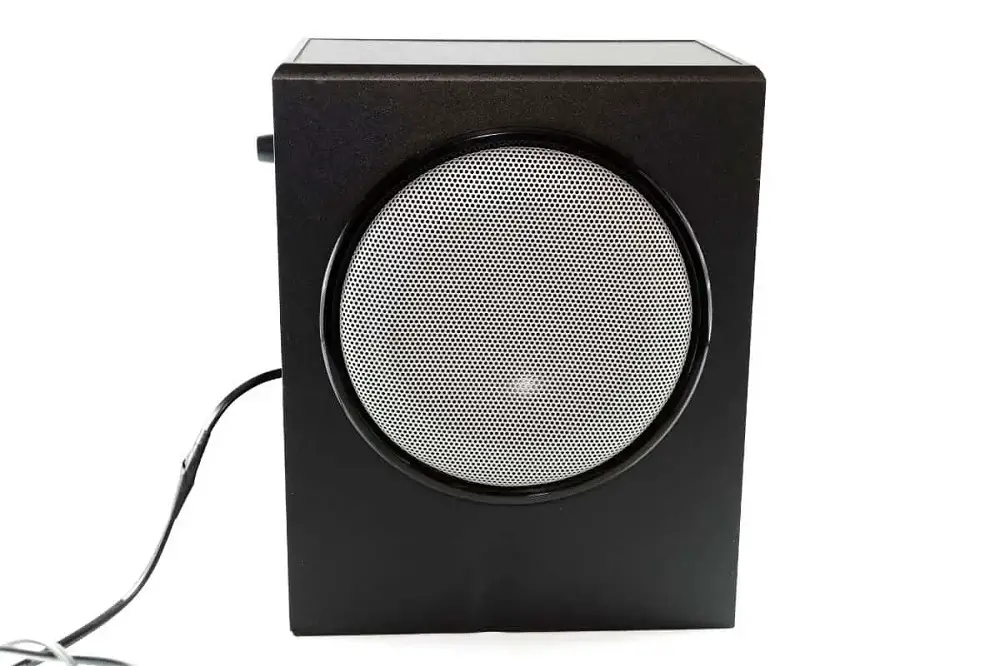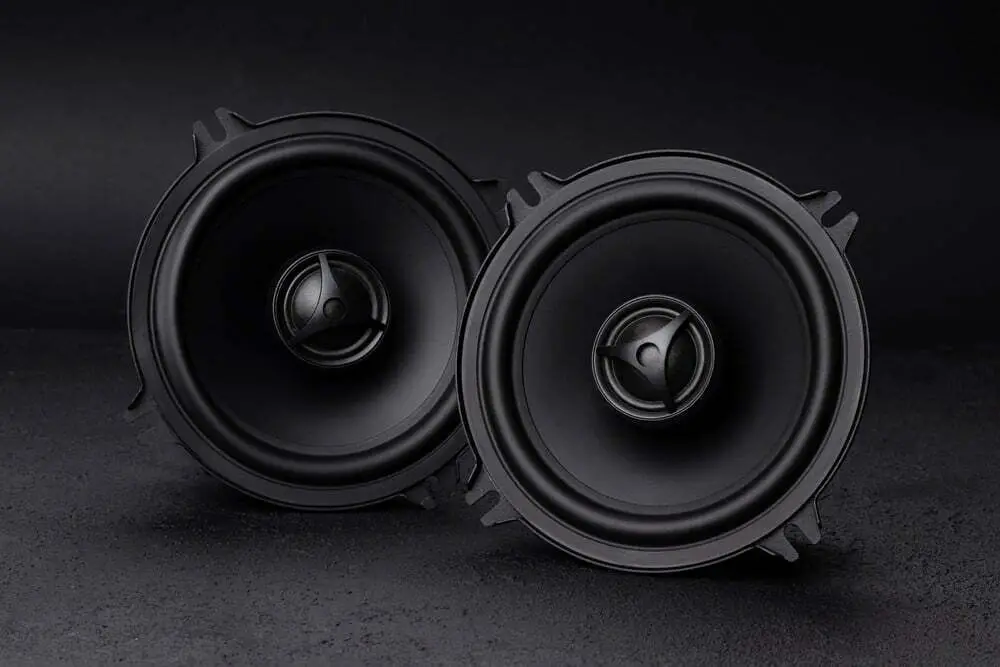A subwoofer is an essential component of a sound system, as it provides the deep, rich bass that is often lacking in other speakers. However, subwoofers can sometimes stop working or “cut out,” which can be a frustrating experience for users.
In this article, we will explore the common reasons why your subwoofer would keep cutting out as well as the solutions to help you fix the problem.

Purpose of subwoofer
The purpose of a subwoofer is to produce low-frequency sounds that other speakers are not capable of reproducing. This includes bass, drums, and other low-frequency sounds that add depth and richness to music and movie soundtracks.
Subwoofers are typically larger and more powerful than other speakers in a sound system, allowing them to produce the low-frequency sounds with greater accuracy and clarity.
Importance of subwoofer working properly
A subwoofer that is not working properly can severely affect the overall sound quality of a music or home theater system. If a subwoofer cuts out, it can result in a noticeable drop in bass or a complete absence of low-frequency sounds.
This can make music sound thin and lackluster, and movie soundtracks can be less immersive. Ensuring that your subwoofer is working properly is important to enjoy high-quality audio.
Common Causes of Subwoofer Cut-Out
Loose Connections
One of the most common causes of subwoofer cut-out is loose connections. If the cables connecting your subwoofer to the amplifier or receiver are loose, the subwoofer may not receive a proper signal, causing it to cut out.
Checking the cable connections and ensuring that they are tight is a simple solution to this problem.

Blown Fuses
Another common cause of subwoofer cut-out is a blown fuse. Fuses protect your subwoofer and other components from damage due to power surges or other issues.
If a fuse blows, the subwoofer will not receive power, causing it to cut out. Replacing a blown fuse is a simple and inexpensive solution to this problem.
Overheating
Subwoofers generate a significant amount of heat when they are in use, and if a subwoofer overheats, it can cause it to cut out. Improving ventilation around the subwoofer and avoiding overloading it can help prevent overheating.
Wiring Issues
Wiring issues, such as frayed or damaged cables, can also cause subwoofer cut-out. Checking the wiring and replacing any damaged cables is a solution to this problem.
Amplifier or Receiver Problems
Finally, amplifier problems can also cause the subwoofer to cut out. If the amplifier or receiver is malfunctioning and not providing enough power to the subwoofer, the subwoofer may cut out.
Repairing or replacing the amplifier or receiver is a solution to this problem.
How to Fix Subwoofer Cut-Out
Check the Wiring Connections
Checking the wiring connection is usually the first step to take to fix the subwoofer cut-out. Simply unplug the cables connecting the subwoofer to the amplifier or receiver and plug them back firmly.
Ensure that the connectors are securely in place and not loose. If the connections are still loose, you may need to replace the cables.
Replace any Blown Fuse
If a blown fuse is the culprit, you will need to replace the blown fuse. Locate the fuse holder, which is typically located near the subwoofer or amplifier.
The fuse holder will have two or more wires connected to it, and the fuse will be a small cylindrical object located inside the holder.
Open the fuse holder and remove the blown fuse. Replace it with a new one of the same type and rating.
Improve Ventilation
Improving the ventilation around the subwoofer can help prevent overheating and cut-out.
This can be done by placing the subwoofer in a well-ventilated area, such as near a window or a vent. Avoid placing your subwoofer in an enclosed space or on carpeted surfaces.
Additionally, you can use a fan to circulate air around the subwoofer.
Check the Wiring Connection
To check the wiring connection, inspect the cables connecting the subwoofer to the amplifier or receiver for any signs of fraying or damage. If you find any damage, replace the cables.
Repair or Replace the Damaged Amplifier
If a faulty amplifier or receiver is the reason for the subwoofer cut-out, you may need to repair or replace the amplifier. If the amplifier is under warranty, contact the manufacturer for repair or replacement.
However, if the amplifier is not under warranty, you can have it repaired by a professional or purchase a new amplifier.
Prevention of Subwoofer Cut-Out
Regular Maintenance
Regular maintenance can help prevent subwoofer cut-out. This includes checking the connections and wiring, replacing blown fuses, and improving ventilation.
Additionally, it is important to avoid overloading the subwoofer and to use a surge protector to protect it from power surges.
Proper Placement
Proper placement of the subwoofer can also help prevent cut-out. Place the subwoofer in a well-ventilated area and avoid placing it on carpeted surfaces or in enclosed spaces.
Additionally, ensure that the subwoofer is level and not in contact with any other objects.
Using a Surge Protector
Using a surge protector can help protect your subwoofer and other components from electrical power surges and other electrical-related issues. A surge protector will typically have multiple outlets and can be purchased at most electronics stores.
Avoid Overloading the Subwoofer
Finally, avoiding overloading the subwoofer can help prevent cut-out. This means that you should avoid turning up the volume level too high, especially for an extended period of time.

Conclusion
In conclusion, subwoofer cut-out can be caused by a variety of issues, including loose connections, blown fuses, overheating, wiring issues, and amplifier problems.
By following the solutions provided in this article, you can fix the problem and enjoy high-quality audio from your subwoofer.
Regular maintenance, proper placement, using a surge protector, and avoiding overloading the subwoofer can help prevent cut-out in the future.
What should I do if the subwoofer cut-out issue persists even after checking the connections and replacing the fuse?
If the issue persists even after checking the connections and replacing the fuse, the next step is to check the cables and improve the ventilation around the subwoofer.
If the problem still persists, it may be that your amplifier or receiver is faulty and needs to be repaired or replaced.
How do I determine if the subwoofer cut-out is caused by an issue with the amplifier?
You can determine if the subwoofer cut-out is caused by an issue with the amplifier by performing a series of tests.
If you have tried every other fix and your subwoofer is still cutting out, then it is likely that the issue is with the amplifier.
Is it okay to place the subwoofer on a carpeted surface?
No, it is not recommended to place the subwoofer on a carpeted surface as it can restrict air flow and cause overheating. Instead, place the subwoofer in a well-ventilated area and avoid placing it in enclosed spaces.
What type of surge protector should I use for my subwoofer?
You should use a surge protector specifically designed for audio or home theater components. Look for a surge protector with multiple outlets and a high Joule rating, which measures the energy absorption capacity of the surge protector.
Is it okay to play music or movies at high volume levels for extended periods of time?
No, it is not recommended to play music or movies at high volume levels for extended periods of time on your subwoofer. This can cause the subwoofer to overheat and eventually cut out.
To prevent your subwoofer from cutting out, don’t always play music or movies at high volume levels, especially for extended periods and if possible, take breaks between listening sessions.
